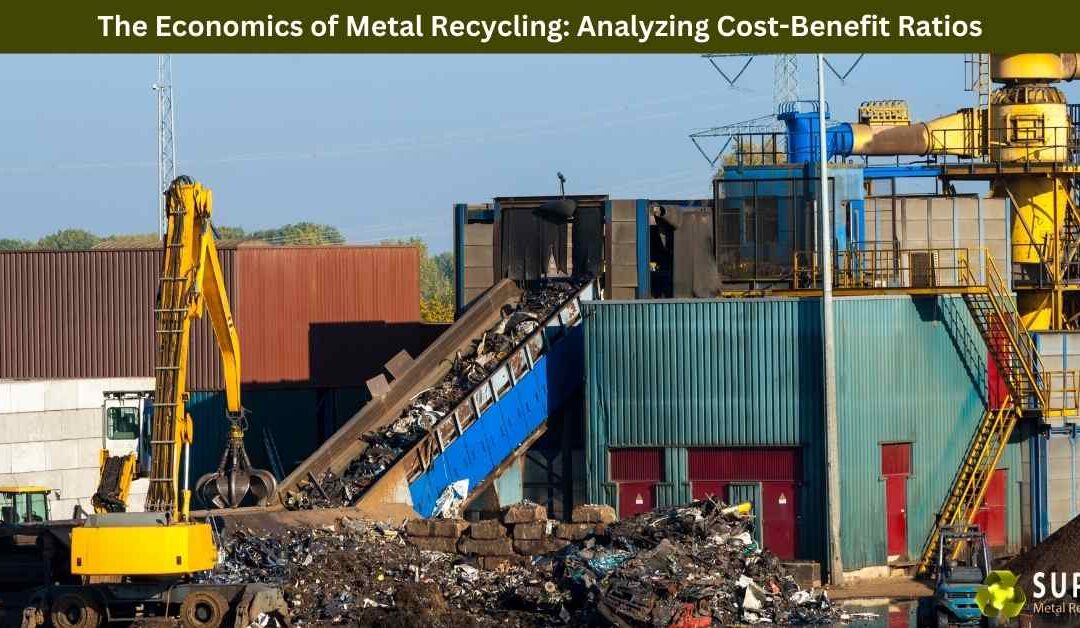Metal recycling is not just an environmentally sustainable practice; it also offers significant economic benefits. For businesses, governments, and individuals, understanding the cost-benefit ratios involved in metal recycling provides valuable insights into its financial viability and broader economic implications. This article explores the key factors influencing the economics of metal recycling and why it is a smart investment for the future.
The Costs Involved in Metal Recycling
While metal recycling is widely regarded as a cost-effective alternative to raw material extraction, it does involve certain expenses. Key cost factors include:
- Collection and Transportation:
- Gathering scrap metal from various locations and transporting it to recycling facilities requires logistical planning and fuel expenses.
- Sorting and Processing:
- Advanced technologies such as magnetic separation, shredding, and eddy current systems are used to sort metals accurately, which incurs operational costs.
- Labor and Equipment:
- Skilled labor and specialized machinery are essential for efficient recycling operations, contributing to ongoing expenses.
- Energy Consumption:
- While recycling metals uses significantly less energy than mining, it still requires electricity and fuel for melting and refining processes.
The Economic Benefits of Metal Recycling
Despite these costs, the benefits of metal recycling far outweigh the expenses, making it a lucrative and sustainable industry. Key advantages include:
- Resource Conservation:
- Recycling reduces the demand for virgin metal extraction, conserving finite natural resources and lowering associated environmental costs.
- Energy Savings:
- Recycling metals like aluminum and steel uses up to 95% and 60% less energy, respectively, compared to primary production.
- Revenue Generation:
- Recycled metals retain their value, providing a steady stream of income for recycling companies and individuals who sell scrap metal.
- Job Creation:
- The metal recycling industry supports a wide range of jobs, from collection and transportation to processing and sales.
- Reduced Environmental Costs:
- By diverting waste from landfills and minimizing pollution, recycling helps reduce the long-term environmental costs associated with waste management and climate change.
Analyzing Cost-Benefit Ratios
To assess the economic viability of metal recycling, stakeholders often analyze cost-benefit ratios. Key considerations include:
- Material Type:
- High-value metals like copper, aluminum, and stainless steel offer better cost-benefit ratios due to their market demand and recyclability.
- Volume and Scale:
- Recycling larger volumes of metal can lower per-unit costs, increasing profitability.
- Technological Investments:
- Upfront investments in advanced recycling technologies can improve efficiency and reduce long-term operational costs.
- Market Trends:
- Fluctuations in global metal prices and demand impact the profitability of recycling operations.
Challenges in Metal Recycling Economics
Despite its advantages, the economics of metal recycling faces certain challenges:
- Market Volatility: Prices for scrap and recycled metals can fluctuate significantly, affecting profitability.
- Contamination Issues: Mixed or contaminated scrap requires additional processing, increasing costs.
- Infrastructure Gaps: Inadequate collection and recycling infrastructure in some regions limit efficiency.
The Path Forward
To enhance the economic benefits of metal recycling, stakeholders can adopt the following strategies:
- Policy Support:
- Governments can provide incentives such as tax breaks and subsidies to encourage recycling.
- Public Awareness:
- Educating individuals and businesses about the financial and environmental benefits of recycling can boost participation.
- Technological Advancements:
- Investing in cutting-edge sorting and processing technologies can reduce costs and improve material recovery rates.
- Collaborative Efforts:
- Partnerships between industries, governments, and recycling companies can streamline processes and improve cost efficiency.
Conclusion
The economics of metal recycling demonstrates a compelling case for its adoption. By balancing costs with substantial benefits, metal recycling contributes to resource conservation, energy savings, and economic growth. As industries and governments prioritize sustainability, optimizing cost-benefit ratios in metal recycling will play a pivotal role in building a resilient and circular economy.
If you are in Upwey, Victoria 3158, and looking for a metal recycling service, this is the best way to visit us.
Super Metal Recycling
345 Frankston – Dandenong Road, Dandenong South VIC 3175
(03) 9706 4909


Recent Comments